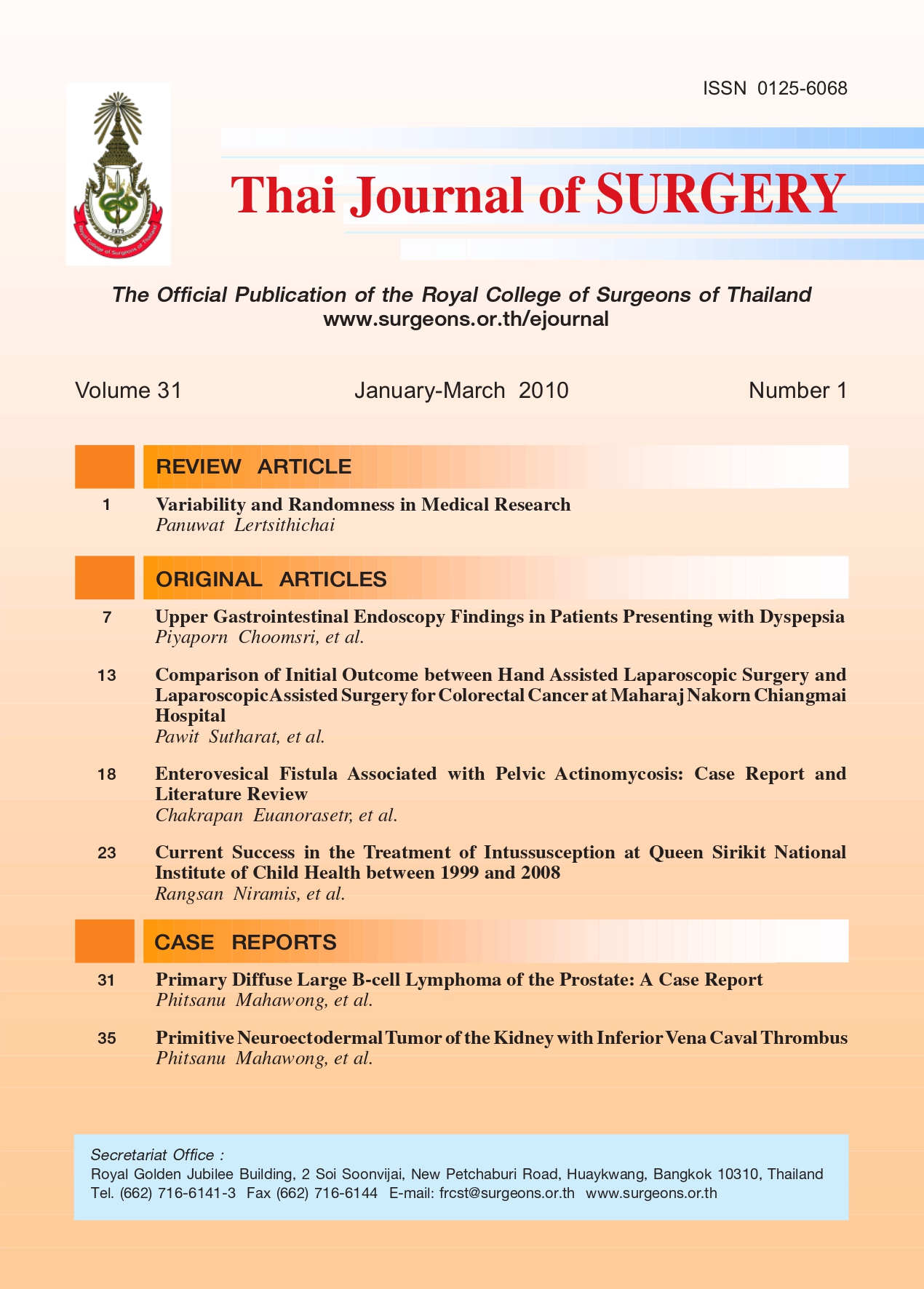Variability and Randomness in Medical Research
Keywords:
Predictability, random variability, statistics, systematic variabilityAbstract
In the present article, the first in a series of articles on the principles of statistics for surgeons, the ideas of variability and randomness in medical observations are developed. Variability can be partitioned into two components: systematic and random. The detection of systematic variability is the objective of scientific investigations, while random variability can be defined as the residual variability after systematic variability has been taken into account. That is, if the residual variability can be shown to satisfy, approximately, the statistical criteria of randomness. In the present article, we provide two examples in which the residual variation is shown graphically to behave like random variation. In practical applications, random variation should not be defined as having “no cause”. Similarly, randomness should not be defined as complete unpredictability. In later articles in the series, we will explore how the ideas of variability are used in medical research and statistical analyses.
References
health sciences. New York: John Wiley & Sons; 1993. p. 1-16.
2. Machin D, Campbell MJ. Design of studies for medical
research. Chichester: John Wiley & Sons; 2005. p. 9-12.
3. The notion that a single, possibly unique, observation can
be assigned a probability measure is not universally
accepted. Nonetheless, for a statistical theory compatible
with such a view of probability, see: Savage LJ. The foundation
of statistics. New York: Dover Publications Inc.; 1972.
4. Tomassi P. Logic and scientific method. In: Phillips CI, editor.
Logic in medicine. 2nd ed. London: BMJ Publishing Group;
1995. p. 39-43.
5. Thagard P. How scientists explain disease. Princeton:
Princeton University Press; 1999. p. 181-98.
6. Hainault P, Wiman KG. 30 years and a long way into p53
research. Lancet Oncol 2009;10:913-9.
7. For example, see the classic frequentist definition of
randomness in: von Mises R. Probability, statistics and truth.
New York: Dover Publications Inc.; 1957. p. 23-9.
8. Murphy EA. The logic of medicine. 2nd ed. Baltimore: The
Johns Hopkins University Press; 1997. p. 92-5.
9. Ruhla C. The physics of chance. Oxford: Oxford University
Press; 1992. p. 66-125.
10. Gillispie CC. Pierre-Simon Laplace, 1749 - 1827: a life in exact
science. Princeton: Princeton University Press; 1997.
11. Stigler SM. The history of statistics: the measurement of
uncertainty before 1900. Cambridge, Massachusetts:
Belknap Press; 1986. p. 62-98.
12. Armitage P, Berry G. Statistical methods in medical research.
3rd ed. Oxford: Blackwell Scientific Publications; 1994. p. 55-
9.
13. McCullagh P, Nelder JA. Generalized linear models. 2nd ed.
London: Chapman & Hall; 1989. p. 37-40.
14. Chatfield C. Problem solving: a statistician’s guide. London:
Chapman & Hall, 1988.
15. Levinson HC. Chance, luck and statistics. New York: Dover
Publications Inc; 1963. p. 218-42.
Downloads
Published
How to Cite
Issue
Section
License
Articles must be contributed solely to The Thai Journal of Surgery and when published become the property of the Royal College of Surgeons of Thailand. The Royal College of Surgeons of Thailand reserves copyright on all published materials and such materials may not be reproduced in any form without the written permission.



